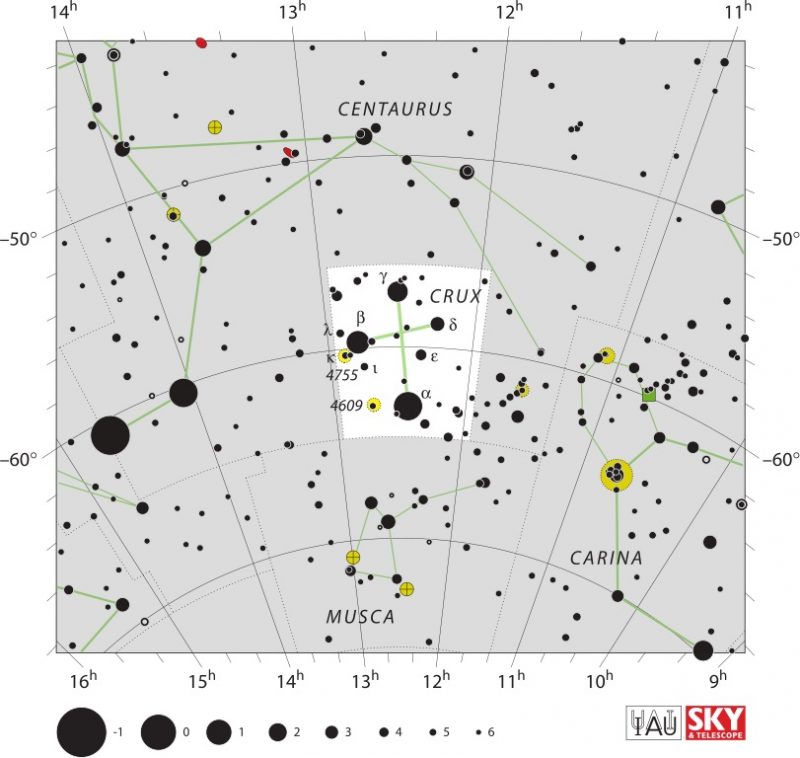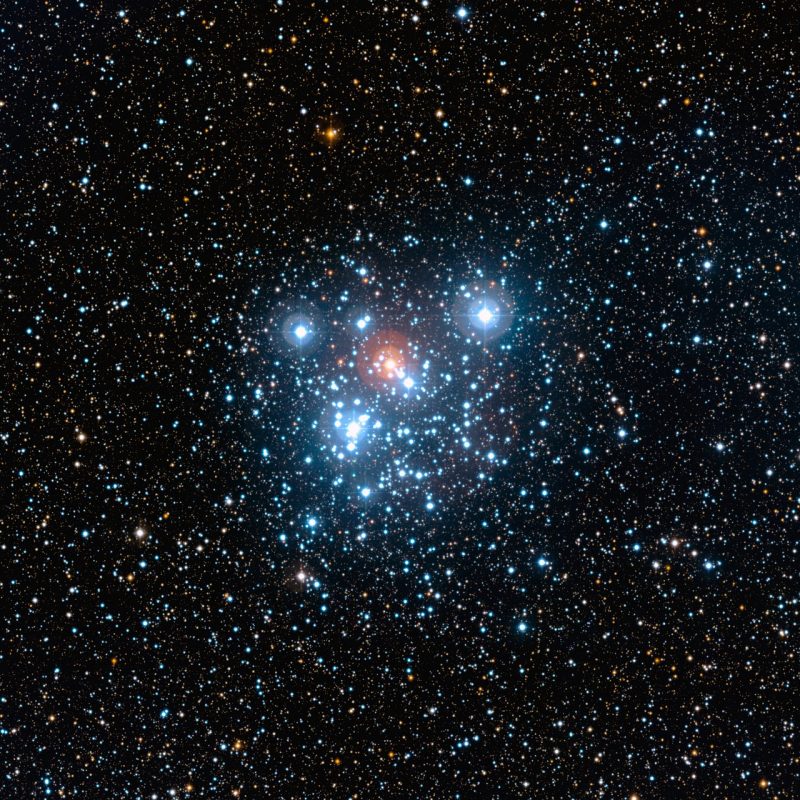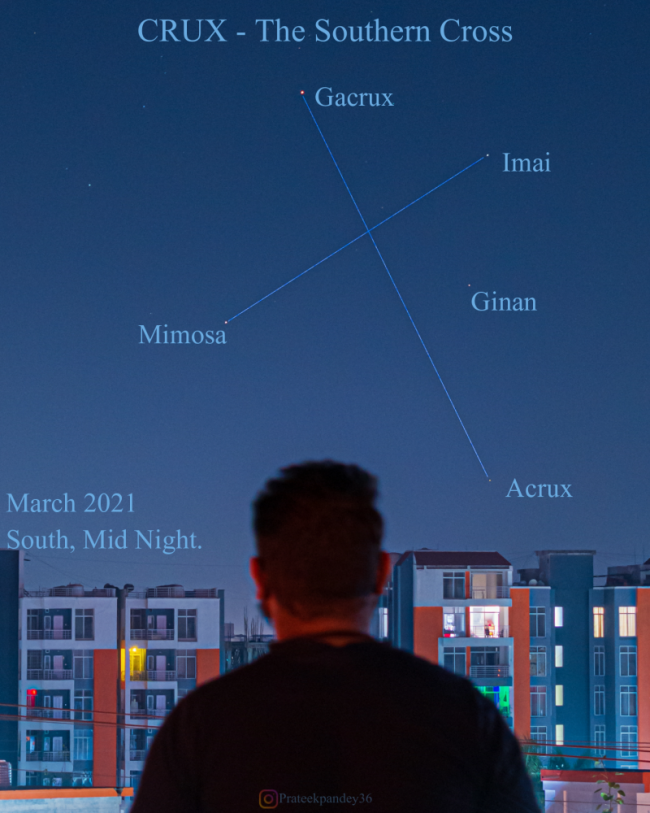
Crux the Southern Cross is one of the easiest constellations to spot in Southern Hemisphere skies. It consists of four relatively bright stars close to each other. It stays above the horizon year round for observers in the Southern Hemisphere, but it can be seen by those in the southern reaches of the Northern Hemisphere for a short time each year. For example, observers in southerly latitudes around Miami, Florida (around 26 degrees north latitude and farther south), can view the Southern Cross and its Jewel Box cluster on May evenings as it appears just above the southern horizon.
Join us in making sure everyone has access to the wonders of astronomy. Donate now!
How to find the Southern Cross
Crux lies between the constellations Centaurus the Centaur and Musca the Fly. You can locate it simply by looking for four bright stars close together. The stars are less than 5 degrees apart. Five degrees is about the width of your three middle fingers held at arm’s length. The compact size of Crux makes it the smallest of all the 88 constellations.
Crux looks like a cross but could also be considered kite-shaped. You can use the two stars that mark the long brace of the kite as pointer stars. Take the distance between these two stars and extend the line south 4 1/2 times its length to reach the south celestial pole. Unlike in the Northern Hemisphere, there is no bright star “pole star.”

Stars of Crux
The brightest star of the Southern Cross is Alpha Crucis, or Acrux. It is the bottom star of the cross and shines at magnitude 0.77 from a distance of 320 light-years. It’s also the 12th brightest star in the sky.
Moving in a clockwise circle around the cross we come to the 2nd brightest star, Beta Crucis, sometimes called Becrux or Mimosa. Beta Crucis is magnitude 1.25 from a distance of 350 light-years.
Next, on the top of the cross, is Gamma Crucis, or Gacrux. Gacrux shines at magnitude 1.59 at a distance of 88 light-years. Finally, on the right side of the cross, is Delta Crucis. It shines at magnitude 2.79 from a distance of 360 light-years.

The Jewel Box and other clusters in Crux
The Jewel Box is one of the most beautiful open clusters in the Southern Hemisphere. It lies just 1 degree from Beta Crucis. The Jewel Box, or NGC 4755, is bright at magnitude 4.2. Kappa Crucis, a magnitude 5.89 star, lies inside. You can see the Jewel Box without optical aid, but a pair of binoculars or a telescope will bring more of the stars into focus. Can you see color differences between these glittering gems?

The Coalsack Nebula
The easiest dark nebula to see in the sky is the Coalsack Nebula, found in the southeastern corner of Crux. The Coalsack is a dark, cloudy patch of dust and gas that obscures an entire swath of the Milky Way’s stars that lies behind it.


Bottom line: Crux, the constellation of the Southern Cross, is a hallmark of southern skies and contains the open cluster known as the Jewel Box.











